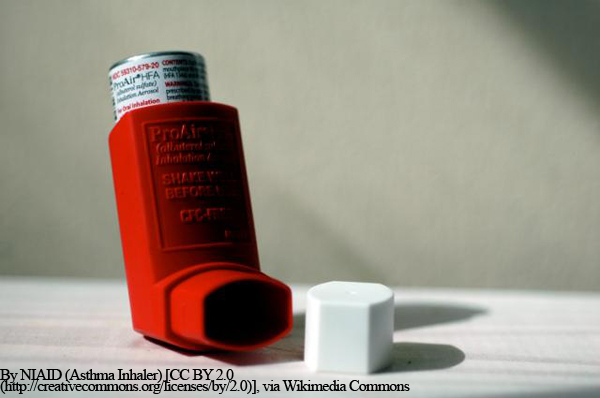Researchers at Rice University and Baylor College of Medicine have found that many metered-dose inhalers used in the maintenance of chronic lung diseases, may be dispensing just half of the active ingredient in each puff. The NIH-funded study – which was published in the Journal of Aerosol Medicine and Pulmonary Drug Delivery – suggests that the tens of millions of Americans who use inhalers could be making critical errors each time they use the devices.
“Metered-dose inhalers are used every day by people with asthma, chronic obstructive pulmonary disease (COPD) and other chronic lung diseases, and the vast majority of the time – between 70 and 90 percent – patients make mistakes that keep some of the medicine from making it to their lungs,” said Ashutosh Sabharwal, professor of electrical and computer engineering at Rice and co-author of two recent studies about the issue. “While inhalers are the most efficient delivery mechanism for many patients, these devices require deft maneuvers on the part of patients. The common errors are well-known, but fixing them continues to be a challenge.”
Sabharwal’s Scalable Health Lab at Rice has a research focus of using smartphones, wearable technology and sensors to study issues of public health. In partnership with Dr. Nick Hanania, pulmonologist and associate professor of medicine and director of the Airways Clinical Research Center at Baylor College of Medicine, the researchers aimed to identify the most common user errors associated with inhalers.
“For years, we as clinicians have known that our patients do not use their inhalers as they should,” said Hanania. “In the best case, a puff from an inhaler results in about 40 percent of the medicine reaching the lungs. In the worst case, if someone does everything wrong, that drops to seven percent. We know the two extremes, but the vast majority of everyday use falls somewhere in the middle. In this study, we have been able to objectively measure the errors, and, using new technology, learn about their impact on drug delivery to the lungs.”
According to Rajoshi Biswas, a Ph.D. student in Rice’s lab, most previously-published inhaler-dosage studies have focused on patients who use their metered-dose inhalers perfectly. In her experience however, the average patient has issues using their inhaler properly.
“What’s been lacking is a rigorous quantitative examination of how much medicine is making it to the lungs for those everyday cases,” said Biswas. She went on to say that one of the most common errors made by patients is that they forget to shake their inhaler vigorously enough between doses. The angle of the inhaler when it is discharged, and the force of the inhalation are also critical to ensuring that patients receive a full dose.
Using airflow data collected from eight patients, Biswas designed a machine to simulate different characteristics of human inhalation. The experimental device included a robotic finger to operate the inhaler, as well as metal version of the human mouth and throat. This setup allowed Biswas to measure the amount of inhaler medication that made it to the lungs based on different inhaler use scenarios.
“The thing that matters the most is coordination,” said Biswas. “It’s vital to start breathing just before or at the exact same time the inhaler is activated. A delay of just a half second between pressing the inhaler and breathing in was enough to limit lung deposition to about 20 percent – about half of what a patient would get in the ideal case.”
When the machine began its inhalation just before the inhaler was discharged, over 35 percent of the medication was found to reach the lungs. Biswas says that starting to inhale before dispensing the medication ensures that the drug does not get stuck in the mouth or throat.
“Our results differ from the current Global Initiative for Asthma inhaler use guidelines,” said Sabharwal. “The propellant used in inhalers has changed in recent years, and the current guidelines were developed based on studies of the old inhalers. Our findings, coupled with the recent changes in inhaler propellants, suggest it is time to revisit these guidelines.”












Join or login to leave a comment
JOIN LOGIN